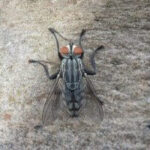Flamingos, with their striking pink plumage and elegant stature, are a captivating sight in wetlands around the world. These iconic birds are often admired for their unique feeding habits and social behaviors. But a question that frequently arises when observing these long-legged creatures is: Does Flamingo Fly? The answer is a resounding yes! Flamingos are indeed capable flyers, possessing impressive aerial skills that are crucial for their survival and lifestyle.
Flamingos are not just beautiful birds standing gracefully in shallow waters; they are also equipped for flight. When taking to the skies, flamingos showcase a wingspan that can reach up to 5 feet (1.5 meters) in larger species. This wingspan, combined with strong chest muscles, allows them to achieve flight speeds of around 35 miles per hour (56 kilometers per hour). While they might appear somewhat clumsy on land, their flight is surprisingly graceful and efficient. They often fly with their necks and legs extended, creating a streamlined silhouette against the sky.
Flamingos undertake flight for various essential reasons. One primary driver is migration. Depending on the species and geographic location, flamingos may migrate in search of food or more favorable breeding grounds. These migrations can cover considerable distances, demonstrating their endurance as flyers. Flight also enables them to escape predators quickly and efficiently traverse between feeding sites, especially in expansive wetland habitats. Their ability to fly is integral to their nomadic nature, allowing them to exploit resources across different locations and adapt to changing environmental conditions.
The anatomy of a flamingo is perfectly adapted for both wading and flying. While their long legs are ideal for navigating shallow waters and their specialized beaks for filter-feeding, their powerful wings and lightweight bodies are built for aerial locomotion. It’s interesting to note that what appears to be a flamingo’s backward-bending knee is actually its ankle joint; their knees are located much higher up, close to their body, contributing to a balanced posture both on the ground and in flight. This unique leg structure doesn’t hinder their flight capability but rather supports their overall agility and movement.
Furthermore, the diverse distribution of the six flamingo species across the globe is a testament to their flying ability. From the Caribbean to Africa, Asia, and South America, flamingos have colonized a wide range of habitats. Greater flamingos, for example, are found across Africa, Asia, and even parts of Europe, showcasing their capacity for long-distance travel. Lesser flamingos, though smaller, are incredibly numerous and also utilize flight to navigate their habitats in Africa and southern Asia.
Even in extreme environments, where some flamingo species thrive in highly alkaline lakes, flight plays a crucial role. These harsh soda lakes, while rich in the algae and small invertebrates that flamingos feed on, can be corrosive and challenging. Flamingos rely on their ability to fly to reach these remote and often isolated locations, ensuring access to food sources that are unavailable to most other animals. The fact that flamingo parents feed their chicks crop milk, a self-produced liquid rich in nutrients, further highlights the energy investment these birds make, supported by their efficient foraging flights.
In conclusion, the question “does flamingo fly?” is definitively answered with a yes. Flamingos are not merely wading birds; they are skilled flyers capable of migration, predator evasion, and traversing diverse landscapes. Their flight is an essential aspect of their biology and behavior, contributing to their ecological success and captivating presence in wetlands worldwide. Observing a flock of flamingos taking flight, their pink wings catching the sunlight, is a truly remarkable testament to their aerial abilities.
